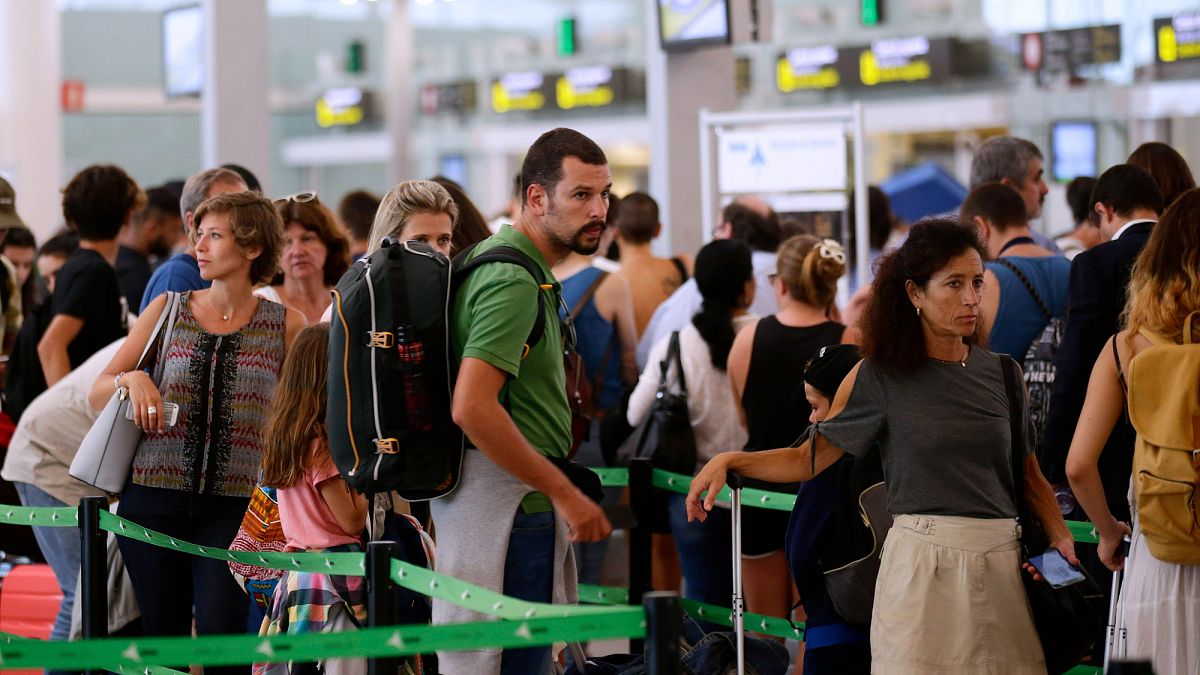ADVERTISEMENT
A date for the start of the EU’s long-delayed Entry/Exit System (EES) has finally been announced.
Officials have said that Europe’s new digital border system for non-EU nationals will be rolled out beginning on 12 October this year.
“The launch sets up a step closer in making the EU the most advanced travel destination in the world,” Henna Virkkunen, Executive Vice-President for Tech Sovereignty, Security and Democracy, said in a statement.
“By working closely with Member States and the transport sector, we are creating a secure, efficient, and travel-friendly framework that reflects Europe’s commitment to both security and technological innovation.”
When will the EU’s EES be fully launched?
The EES is being introduced to bolster border security and identify travellers who overstay their permitted time in the Schengen Area (90 days within a 180-day period).
The new system requires Europe’s border crossings to have dedicated infrastructure installed. The UK government has reportedly provided Eurostar, Eurotunnel and the Port of Dover with £3.5 million (€4.1 million) each to spend on registration kiosks.
From 12 October onwards, EU Member States will start introducing the EES gradually over a period of six months, the European Commission has said in a statement.
Border authorities will progressively register the data of third-country nationals crossing the borders. At the end of this period, the EES will be fully deployed at all border crossing points, according to the Commission.
What does the EES mean for travellers?
The EES will be a registration system for UK, US and other non-EU travellers.
Travellers will need to scan their passports or other travel documents at a self-service kiosk each time they cross an EU external border. It will not apply to legal EU citizens or residents or those with long-stay visas.
The system will register the traveller’s name, biometric data, and the date and place of entry and exit. Facial scans and fingerprint data taken during the first registration is stored in the EES database for three years.
During this period, travellers will only need to provide a fingerprint or photo at the border when entering and exiting, which will be matched against stored data.
Will the EES cause border delays?
One of the key concerns for travellers is whether the new system will cause queues and long waiting times at borders.
This is because passengers will have to navigate new scanning technology that is being installed at all international land, maritime and air crossings in the Schengen Area.
The Commission says it will keep working closely with Member States to ensure a “smooth and effective deployment of the system”.
As the launch date approaches, travellers can expect information campaigns and awareness-raising activities at border crossing points, including airports across the EU, it adds.
EES will be followed by ETIAS in 2026
The EES will be followed by the European Travel Information and Authorisation System (ETIAS) in late 2026, with a transitional grace period of at least six months, meaning it won’t be mandatory until 2027.
This will require non-EU travellers who don’t need a visa to obtain authorisation before entering the Schengen Area.
This will require you to complete an online application, provide personal details, answer security questions and pay a €20 fee. This authorisation will be linked to the traveller’s passport and will be valid for three years or until the passport expires.
Travellers from 60 non-EU countries will need to comply with the ETIAS, but there are some exceptions. The fee will be waived for children under 18 and adults over 70, although they will still need to apply for authorisation.
Eurostar will double the number of booths for EES launch
Cross-Channel train service Eurostar is already taking precautions to ease delays at the border.
Facing overcrowding due to the limited capacity of the historic London St Pancras station, it is allowing passengers to board trains earlier.
Travellers can now take their seats 30 minutes before departure, instead of waiting in the departure lounge.
The operator says the measure will avoid additional delays for check-in, security and border checks when the EES system launches, and later for the ETIAS.
Eurostar will also double the number of border staff and manual booths.
There isn’t space for all of the new EES kiosks, up to 49 from 24, in their usual location, so they’ll be installed at various other places around the station, currently used by both domestic rail operators and the HS1 service, a high-speed railway linking London with the Channel Tunnel.
Eurostar has also assured passengers that there will be “specially-trained staff available at all times” at the new booths.
